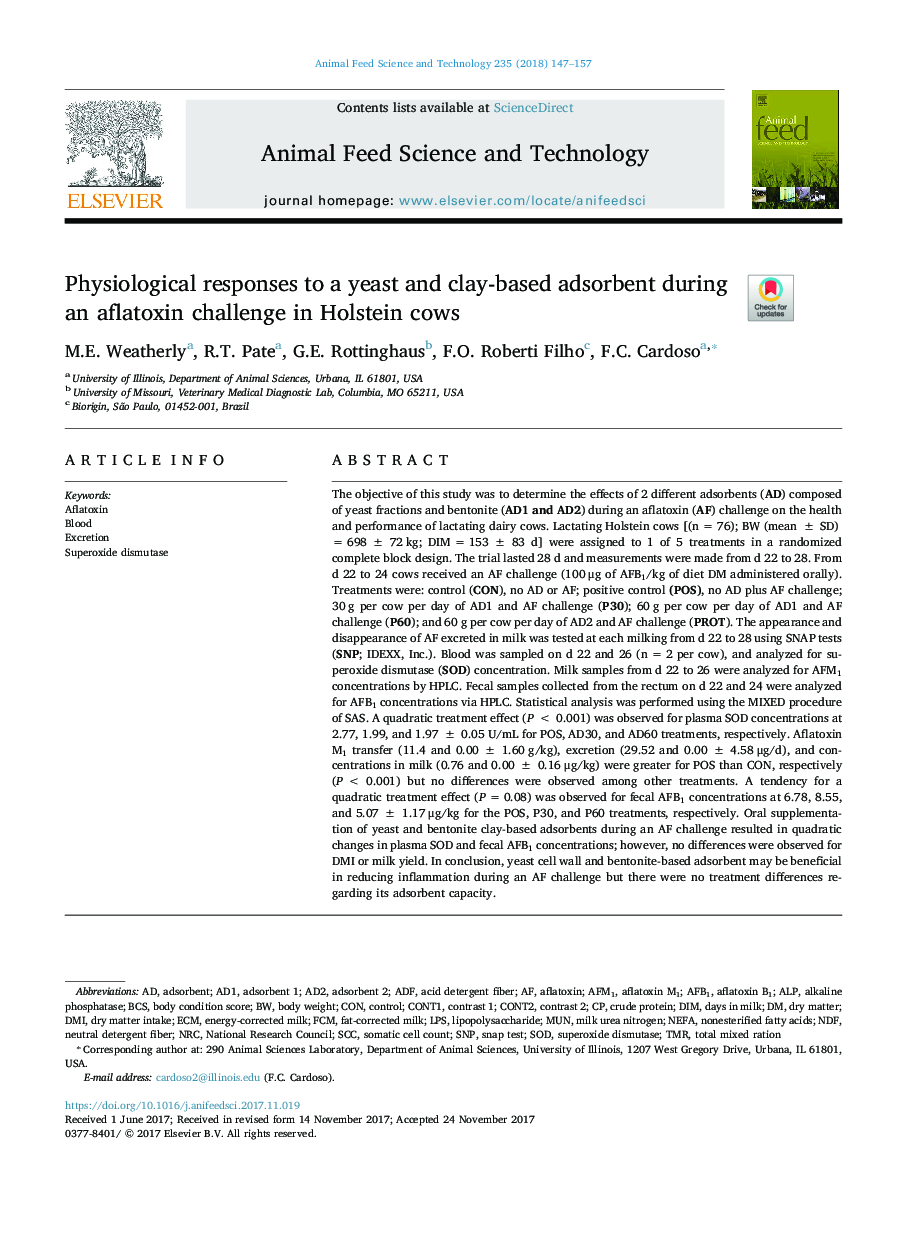| Article ID | Journal | Published Year | Pages | File Type |
|---|---|---|---|---|
| 8491064 | Animal Feed Science and Technology | 2018 | 11 Pages |
Abstract
The objective of this study was to determine the effects of 2 different adsorbents (AD) composed of yeast fractions and bentonite (AD1 and AD2) during an aflatoxin (AF) challenge on the health and performance of lactating dairy cows. Lactating Holstein cows [(n = 76); BW (mean ± SD) = 698 ± 72 kg; DIM = 153 ± 83 d] were assigned to 1 of 5 treatments in a randomized complete block design. The trial lasted 28 d and measurements were made from d 22 to 28. From d 22 to 24 cows received an AF challenge (100 μg of AFB1/kg of diet DM administered orally). Treatments were: control (CON), no AD or AF; positive control (POS), no AD plus AF challenge; 30 g per cow per day of AD1 and AF challenge (P30); 60 g per cow per day of AD1 and AF challenge (P60); and 60 g per cow per day of AD2 and AF challenge (PROT). The appearance and disappearance of AF excreted in milk was tested at each milking from d 22 to 28 using SNAP tests (SNP; IDEXX, Inc.). Blood was sampled on d 22 and 26 (n = 2 per cow), and analyzed for superoxide dismutase (SOD) concentration. Milk samples from d 22 to 26 were analyzed for AFM1 concentrations by HPLC. Fecal samples collected from the rectum on d 22 and 24 were analyzed for AFB1 concentrations via HPLC. Statistical analysis was performed using the MIXED procedure of SAS. A quadratic treatment effect (P < 0.001) was observed for plasma SOD concentrations at 2.77, 1.99, and 1.97 ± 0.05 U/mL for POS, AD30, and AD60 treatments, respectively. Aflatoxin M1 transfer (11.4 and 0.00 ± 1.60 g/kg), excretion (29.52 and 0.00 ± 4.58 μg/d), and concentrations in milk (0.76 and 0.00 ± 0.16 μg/kg) were greater for POS than CON, respectively (P < 0.001) but no differences were observed among other treatments. A tendency for a quadratic treatment effect (P = 0.08) was observed for fecal AFB1 concentrations at 6.78, 8.55, and 5.07 ± 1.17 μg/kg for the POS, P30, and P60 treatments, respectively. Oral supplementation of yeast and bentonite clay-based adsorbents during an AF challenge resulted in quadratic changes in plasma SOD and fecal AFB1 concentrations; however, no differences were observed for DMI or milk yield. In conclusion, yeast cell wall and bentonite-based adsorbent may be beneficial in reducing inflammation during an AF challenge but there were no treatment differences regarding its adsorbent capacity.
Related Topics
Life Sciences
Agricultural and Biological Sciences
Animal Science and Zoology
Authors
M.E. Weatherly, R.T. Pate, G.E. Rottinghaus, F.O. Roberti Filho, F.C. Cardoso,
